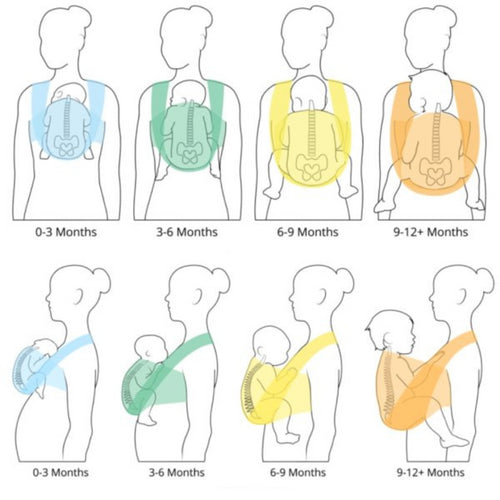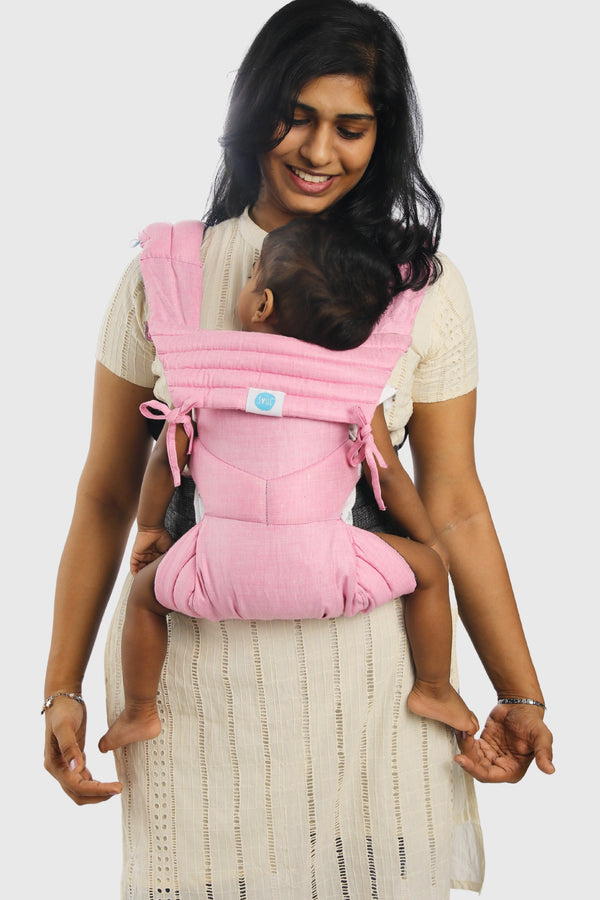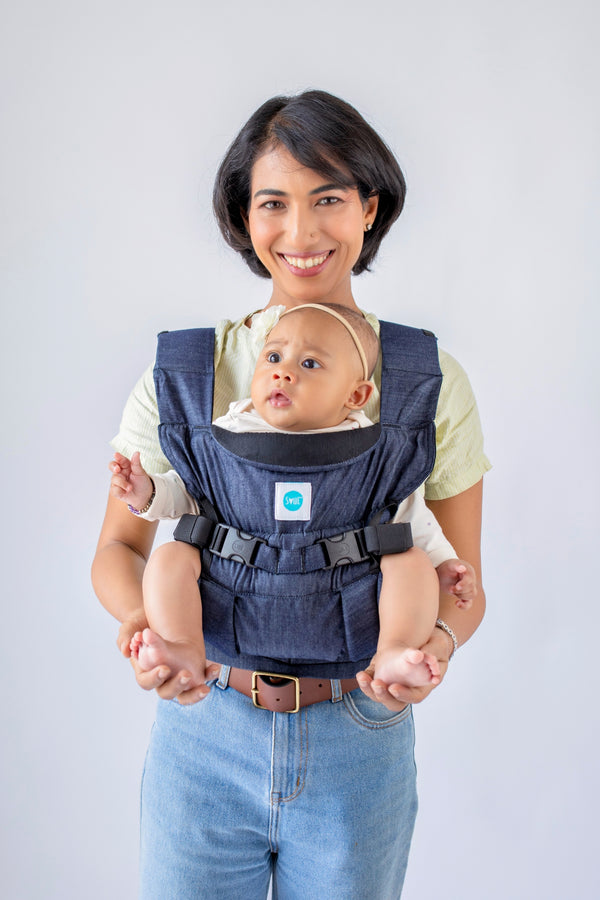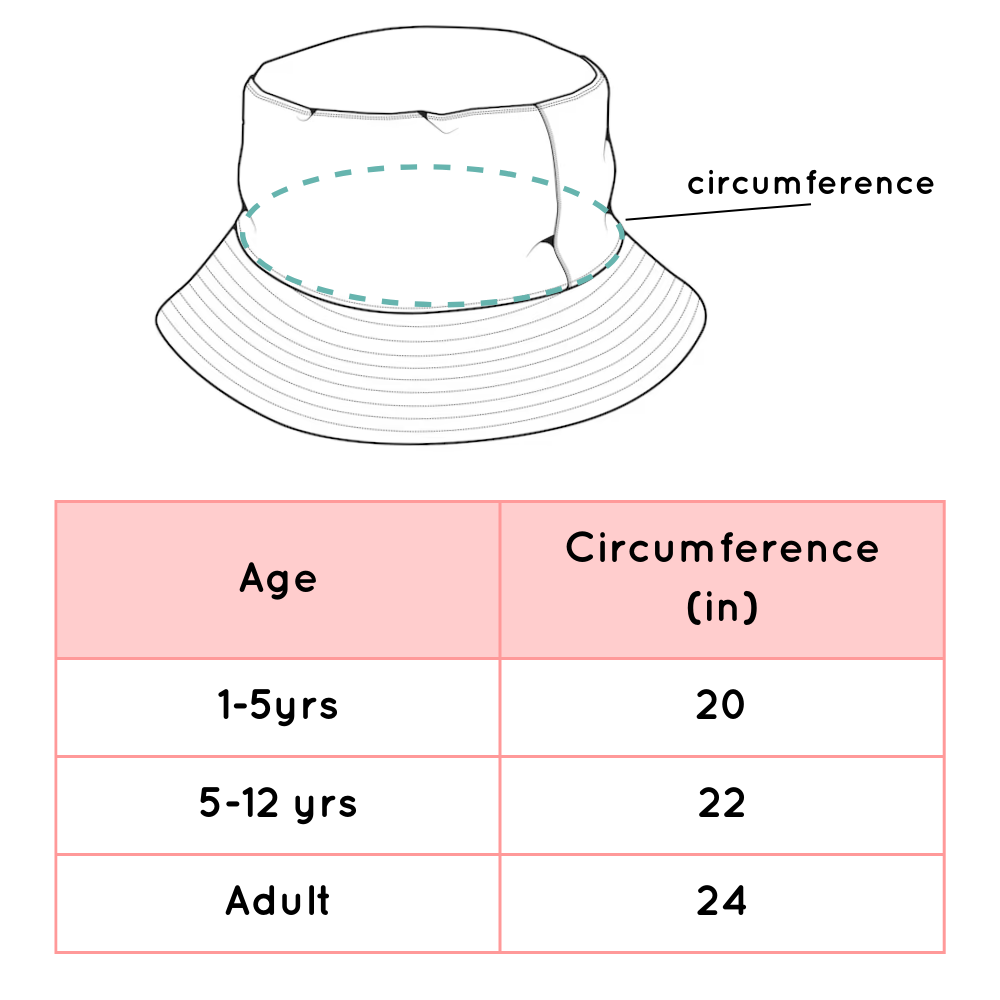Ergonomics in Baby Carriers: A Comprehensive Guide
Posted by SOUL BABY CARRIERS

What exactly do we mean when we say that Soulslings baby carriers are ‘Ergonomic’? Read on to know more…
In this comprehensive guide, we'll explore the significance of ergonomics in baby carriers especially for pregnant and first-time parents. This blog post will provide valuable insights to help you make an informed decision.

When it comes to your baby's delicate spine and developing hips, proper support is crucial. Look for baby carriers that offer a supportive seat, ensuring that your baby's hips are positioned with their knees higher than their bottom. This ergonomic position helps promote healthy hip development and reduces the risk of hip dysplasia.
2. Increase Parent Comfort:
An ergonomic baby carrier enhances comfort by evenly distributing your baby’s weight, reducing back and shoulder strain. For the best ergonomic baby carrier, look for options like the ergonomic toddler carrier that offers padded support and adjustable straps for extended wear.
3. Allows you to babywear longer:
It makes extended babywearing comfortable by supporting your baby’s natural posture and evenly distributing weight. The most ergonomic baby carrier options, including ergonomic baby slings and ergo baby carriers, are designed for longer, more comfortable wear.
4. Make Parent-Child Bond:
An ergonomic baby carrier strengthens the parent-child bond by keeping your baby close in a comfortable, secure way. The baby sling ergonomic design promotes closeness and safe babywearing, enhancing emotional connections and daily interactions.
Features of Ergonomics in Baby Carrier
1. Adjustable and Padded Shoulder Straps:
Carrying your baby for extended periods can put a strain on your shoulders and back. Choose carriers with wide, padded shoulder straps that distribute the weight evenly, providing optimal comfort and preventing discomfort or pain. Adjustable straps allow you to customize the fit, ensuring a snug and secure carry.
2. Waist Support:
As an Indian parent, you may find yourself carrying your baby for extended periods throughout the day. Consider carriers that provide waist support, featuring a wide and adjustable waistband. This helps distribute your baby's weight to your hips, reducing strain on your back and shoulders, and allowing for comfortable long-term use.
3. Breathable and Soft Fabrics:
In the Indian climate, choosing a baby carrier made from breathable and soft fabrics is crucial. Look for carriers that offer good airflow to keep you and your baby cool and comfortable, especially during hot and humid days. Soft fabrics also ensure that your baby's delicate skin remains irritation-free.
4. Safety Features:
While choosing a baby carrier, prioritise safety. Look for carriers with secure buckles, adjustable straps, and sturdy construction. It's important to follow the manufacturer's guidelines and ensure that the carrier meets safety standards, providing a secure and reliable way to carry your baby.
5. Multiple Carrying Positions:
An ergonomic baby carrier provides multiple carrying positions, allowing parents to switch between front, hip, and back carries. This flexibility ensures your baby stays in an ergonomic position while offering comfort and ease.
6. Adequate Seat
An ergonomic baby carrier features an adequate seat that supports your baby's hips and legs in a natural ergonomic position. This ensures ease and encourages sound growth. To keep your baby safe and comfortable, search for the best ergonomic baby carrier. These carriers often have seating that can be adjusted.
Conclusion
Choosing an ergonomic baby carrier is essential for the well-being of both you and your little one. Trust brands like Soulslings to offer ergonomic baby carriers that cater to your needs. Enjoy the benefits of babywearing while nurturing that special bond with your baby. Make an informed choice, prioritize ergonomics, and embark on a joyful parenting journey with the perfect baby carrier for you and your little one.
FAQs
1. Is Infant Baby Carrier Ergonomic?
Yes, an infant baby carrier can be ergonomic if it supports your baby’s natural posture and provides even weight distribution. Look for features like adjustable straps and a supportive seat to ensure the carrier is ergonomic and promotes safe, comfortable babywearing.
2. How to know an Ergonomic baby carrier?
In order to identify an ergonomic baby carrier, make sure to check for features such as a wide, padded seat that supports your baby’s hips and legs in an ergonomic position. The carrier should ideally also offer adjustable straps and multiple carrying positions to ensure both comfort and safety of the child.
3. What are the Rules for Safe Babywearing?
The rules for safe babywearing include ensuring that your baby is always in an ergonomic position, with their hips spread. Use a carrier that supports their back and neck while allowing for proper air circulation. Make sure the carrier is securely fastened and that you can maintain a close, comfortable hold on your baby.
4. What is the most ergonomic front facing baby carrier?
The most ergonomic front-facing baby carrier should include a comfortable, padded seat with supportive elements that keeps your child in an ergonomic position. Choose carriers that offer sufficient head and neck support.
5. How do you carry a baby ergonomically?
To carry your baby ergonomically, choose a carrier that supports their hips and legs in a natural position. Ensure the weight is evenly distributed across your shoulders and hips, and adjust the straps for a snug, comfortable fit.




